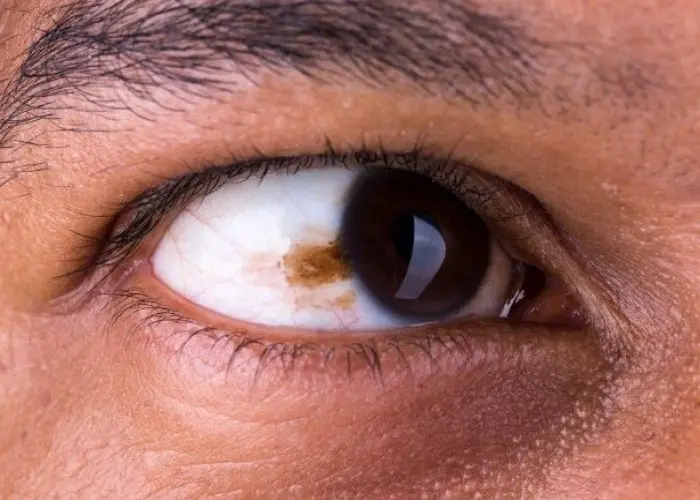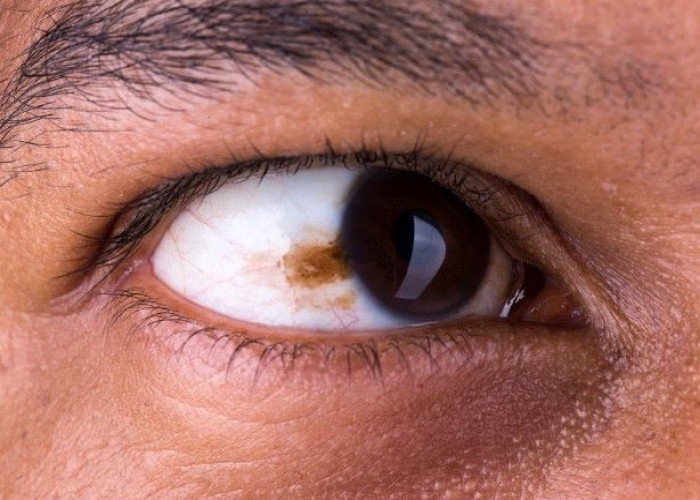 Welcome
Welcome
“May all be happy, may all be healed, may all be at peace and may no one ever suffer."
Eye melanoma

Eye melanoma, also known as ocular melanoma, is a type of cancer that develops in the cells that produce pigment in the eye. This cancer can develop in different parts of the eye, including the iris, the ciliary body, or the choroid.
Eye melanoma can develop in people of any age, but it is more commonly diagnosed in people over the age of 50. Risk factors for eye melanoma include having fair skin, light-colored eyes, and a history of excessive sun exposure or a family history of the disease.
Symptoms of eye melanoma may include:
- A dark spot on the iris or in the whites of the eye
- Changes in the size or shape of the pupil
- Blurred vision or loss of vision in the affected eye
- Sensitivity to light or glare
- Discomfort or pain in the eye
Treatment for eye melanoma may depend on the size, location, and stage of cancer. Treatment options may include radiation therapy, laser therapy, or surgery to remove the tumor. In some cases, the affected eye may need to be removed.
Regular eye exams and early detection are important for the successful treatment of eye melanoma. People with risk factors for the disease, such as fair skin and light-colored eyes, should have regular eye exams and report any changes in vision or eye health to their healthcare provider.
Research Papers
Disease Signs and Symptoms
- A growing dark spot on the iris
- Blurred vision of eye
- A sensation of flashes or specks of dust in your vision (floaters)
- A change in the shape of the dark circle (pupil) at the center of the eye
Disease Causes
Eye melanoma
It's not clear what causes eye melanoma.
Doctors know that eye melanoma occurs when errors develop in the DNA of healthy eye cells. The DNA errors tell the cells to grow and multiply out of control, so the mutated cells go on living when they would normally die. The mutated cells accumulate in the eye and form an eye melanoma.
Where eye melanoma occurs
Eye melanoma most commonly develops in the cells of the middle layer of your eye (uvea). The uvea has three parts and each can be affected by eye melanoma:
- The iris, which is the colored part in the front of the eye
- The choroid layer, which is the layer of blood vessels and connective tissue between the sclera and the retina at the back of the uvea
- The ciliary body, which is in the front of the uvea and secretes the transparent liquid (aqueous humor) into the eye.
Eye melanoma can also occur on the outermost layer on the front of the eye (conjunctiva), in the socket that surrounds the eyeball and on the eyelid, though these types of eye melanoma are very rare.
Disease Prevents
Disease Treatments
Your eye melanoma treatment options will depend on the location and size of the eye melanoma, as well as your overall health and your preferences.
Waiting to treat small eye melanomas
A small eye melanoma may not require immediate treatment. If the melanoma is small and isn't growing, you and your doctor may choose to wait and watch for signs of growth.
If the melanoma grows or causes complications, you may choose to undergo treatment at that time.
Radiation therapy
Radiation therapy uses high-powered energy, such as protons or gamma rays, to kill cancer cells. Radiation therapy is typically used for small to medium-sized eye melanomas.
The radiation is usually delivered to the tumor by placing a radioactive plaque on your eye, directly over the tumor in a procedure called brachytherapy. The plaque is held in place with temporary stitches. The plaque looks similar to a bottle cap and contains several radioactive seeds. The plaque remains in place for four to five days before it's removed.
The radiation can also come from a machine that directs radiation, such as proton beams, to your eye (external beam radiation, or teletherapy). This type of radiation therapy is often administered over several days.
Laser treatment
Treatment that uses a laser to kill the melanoma cells may be an option in certain situations. One type of laser treatment, called thermotherapy, uses an infrared laser and is sometimes used in combination with radiation therapy.
Photodynamic therapy
Photodynamic therapy combines medications with a special wavelength of light. The medicine makes the cancer cells vulnerable to light. The treatment damages the vessels and the cells that make up the eye melanoma. Photodynamic therapy is used in smaller tumors, as it isn't effective for larger cancers.
Cold treatments
Extreme cold (cryotherapy) may be used to destroy melanoma cells in some small eye melanomas, but this treatment isn't commonly used.
Surgery
Operations used to treat eye melanoma include procedures to remove part of the eye or a procedure to remove the entire eye. What procedure you'll undergo depends on the size and location of your eye melanoma. Options may include:
- Surgery to remove the melanoma and a small area of healthy tissue. Surgery to remove the melanoma and a band of healthy tissue that surrounds it may be an option for treating small melanomas.
- Surgery to remove the entire eye (enucleation). Enucleation is often used for large eye tumors. It may also be used if the tumor is causing eye pain.
- After the eye with melanoma is removed, an implant is inserted into the same position, and the muscles controlling movement of the eye are attached to the implant, which allows the implant to move.
- After you've had some time to heal, an artificial eye (prosthesis) is made. The front surface of your new eye will be custom painted to match your existing eye.
Disease Diagnoses
Disease Allopathic Generics
Disease Ayurvedic Generics
Disease Homeopathic Generics
Disease yoga
Eye melanoma and Learn More about Diseases

Anaphylaxis

Long QT syndrome

Type 1 diabetes in children

Posterior vaginal prolapse (Rectocele)

Mammary duct ectasia

Brucellosis

Breast cysts

MCAD deficiency
eye melanoma, চোখের মেলানোমা
To be happy, beautiful, healthy, wealthy, hale and long-lived stay with DM3S.
